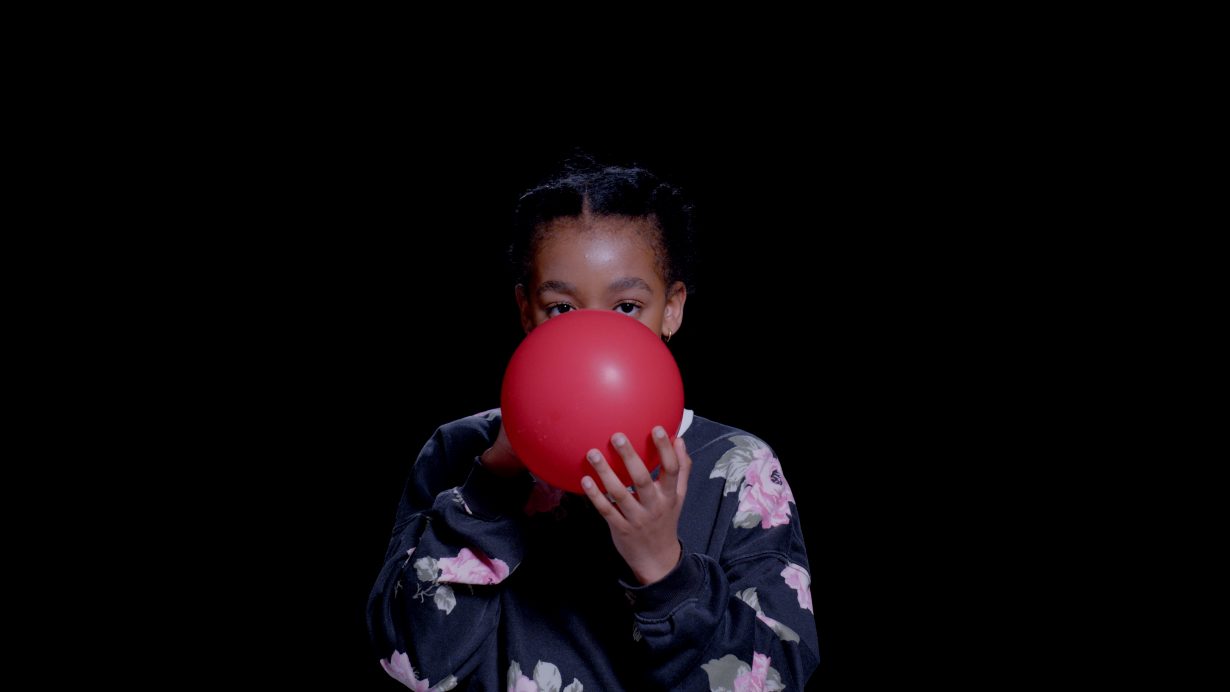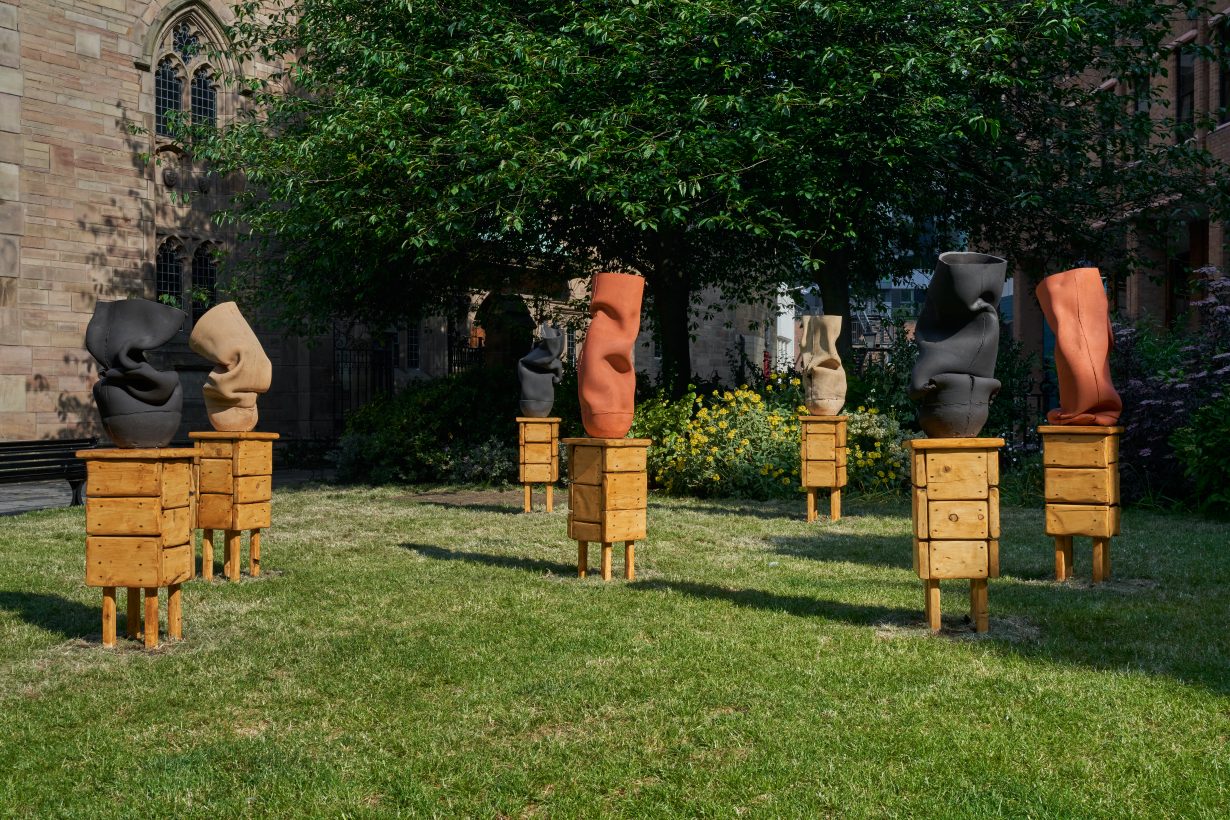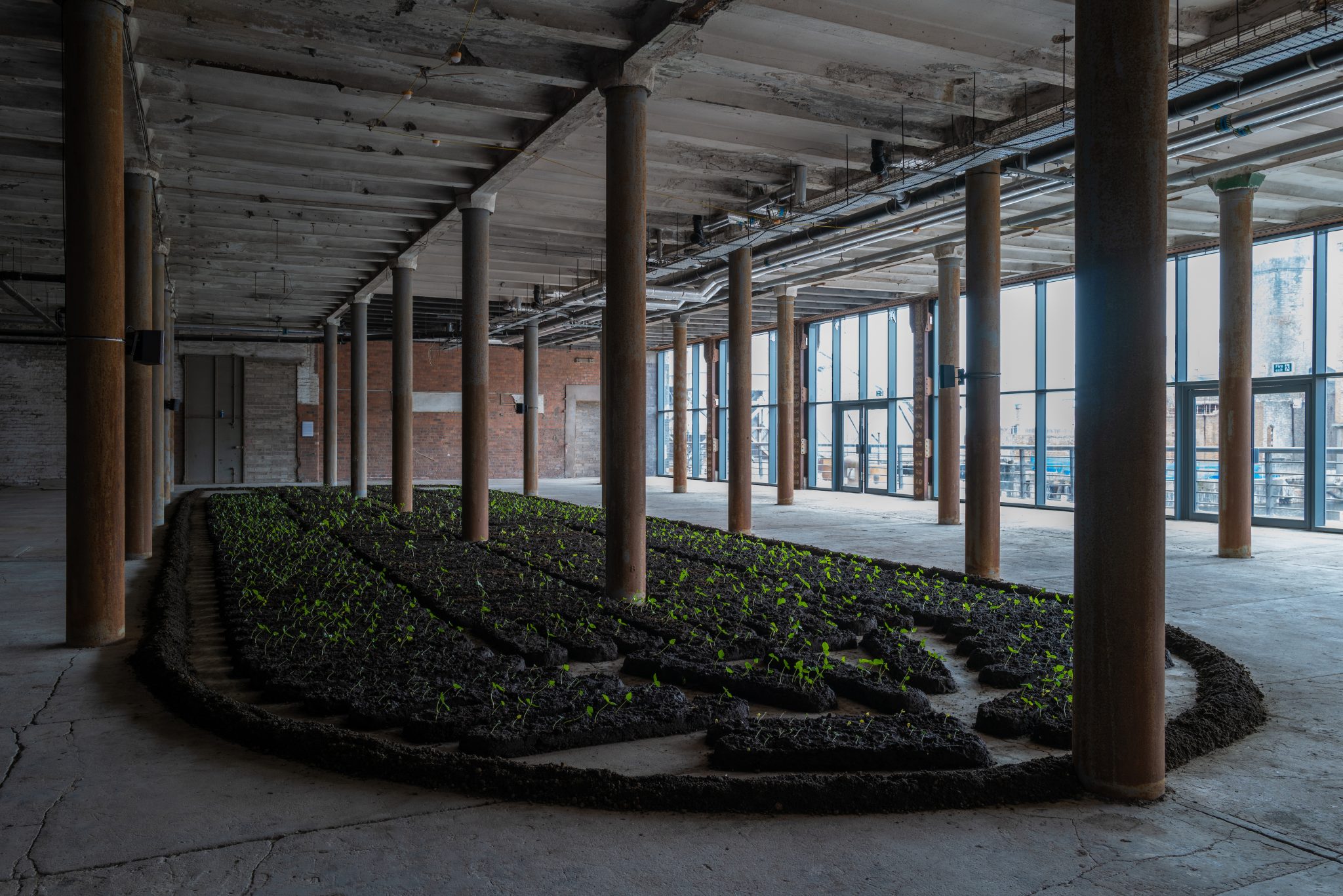An expansive 12th edition asks what it means to find redemption from the traumas of history embedded within the city
The sun beats down on Liverpool’s Stanley Dock as artist Raisa Kabir pulls reeds and rope from the murky green waters of the city’s port, unravelling each strand in preparation for weaving. Her durational performance sets the tone – slow and intentional – for this year’s Liverpool Biennial which seeks to untangle the city’s shrouded imperial past and lay out its consequences, uncomfortably bare, in order to reflect, repair and make space for the return of what’s long lost, be it spirits, knowledge or dreams.
For its 12th edition, UMoya: The Sacred Return of Lost Things takes its name from the isiZulu word for, among other things, ‘breath’. It’s a force we understand, particularly in the aftermath of Eric Garner and George Floyd, to be a point of violence but crucially, as suggested here, one that may also constitute resistance and recovery. At FACT, for example, Belinda Kazeem-Kamiński’s immersive video installation consists of a triangular seating arrangement surrounded by three screens, each showing members of the city’s Black community breathing in and out of red balloons. The vibration of each exhale is made visible in the water that ripples away inside a copper dish set in the middle of the seat. Breath, here, is a connective force powerful enough to shake the room.

‘Have we learned to tend to the wound?’ is the question posed in the back room of Tate Liverpool by Khanyisile Mbongwa, the Capetown based curator responsible for this year’s edition. Her practice is deeply informed by her spiritual vocation as a ‘sangoma’, a type of indigenous healer – and the wound is everywhere in contemporary Liverpool. So Mbongwa has chosen locations that speak directly to it: at the Cotton Exchange, for instance, where the products of forced labour were once traded freely; or in St Nicholas’ church gardens, where Ranti Bam’s clay sculptures mark the burial site of the city’s first Black resident and former slave, Abell. Though perhaps nowhere as much as the vast spread of dockland, where enslaved people and the goods they produced were imported and traded throughout the seventeenth and eighteenth centuries.

It’s a legacy Mbongwa’s biennial doesn’t shy away from. The work on Tate Liverpool’s ground floor is stricken by grief, where Torkwase Dyson’s curved charcoal structures – one half metallically smooth, the other rugged like plaster, both shaped like the hull of a boat – stand heavy as tombstones; upstairs, haunting stories of cruelty and survival sit alongside offerings to spirits lost at sea. Francis Offman’s Untitled (2022) offers one such tale, a sea of books surrounding a bible the artist’s mother carried when fleeing the Rwandan Civil War, each tome precariously held by callipers – the tool used by Belgian colonisers to measure the facial features of Rwandans.


Further along the waterfront, only the hulking Tobacco warehouse (the largest brick warehouse in the world) could do justice to Binta Diaw’s Chorus of Soil (2020), a harrowing, 1:1 scale reproduction of a slave ship made in mud. 130 sprouting shoots grow from its surfaces, one for each person killed in the 1791 Zong Massacre by British slavers. In the next room fact and fiction blur in Melanie Manchot’s docudrama STEPHEN (2023), where members of the Liverpool addiction and trauma recovery community partake in a Freudian re-enactment. ‘This isn’t history repeating itself’ remarks one of the actors, a sentiment echoed across all thirteen venues with work that looks to break century-strong cycles of suffering.

The question of redemption hovers above it all. After confrontation and reckoning, how do we heal? Or, in Mbongwa’s words, “how do we move from catastrophe to aliveness?” To this end, there are also moments of much-needed joy. In Bluecoat, Nicholas Galanin’s film Never Forget (2021) shows the beaming face of an indigenous Lingít toddler as they’re showered in affirmations of love and encouragement; over in Open Eye Gallery, Rahima Gambo’s playful display has sandpit-like structures topped with dusty gold talismans, and a first-person video projection that invokes the liberating possibilities of wandering.
‘Care’ has become a curatorial buzzword in recent years, and it’s easy to be sceptical of those who use it to define their practice. But this Biennial means what it says, holding space for the art, artists, and audience with conviction as it moves through historic and contemporary spaces of duress. Umoya also means air, wind, spirit and soul, a force of renewal that, though difficult to translate, is easily felt, signalling a positive change, not just for the Biennial, but also for a city ready to confront its past.
Stephanie Gavan is a writer and visual artist from Liverpool, UK
12th Liverpool Biennial: UMoya: The Sacred Return of Lost Things, various venues, through 17 September
